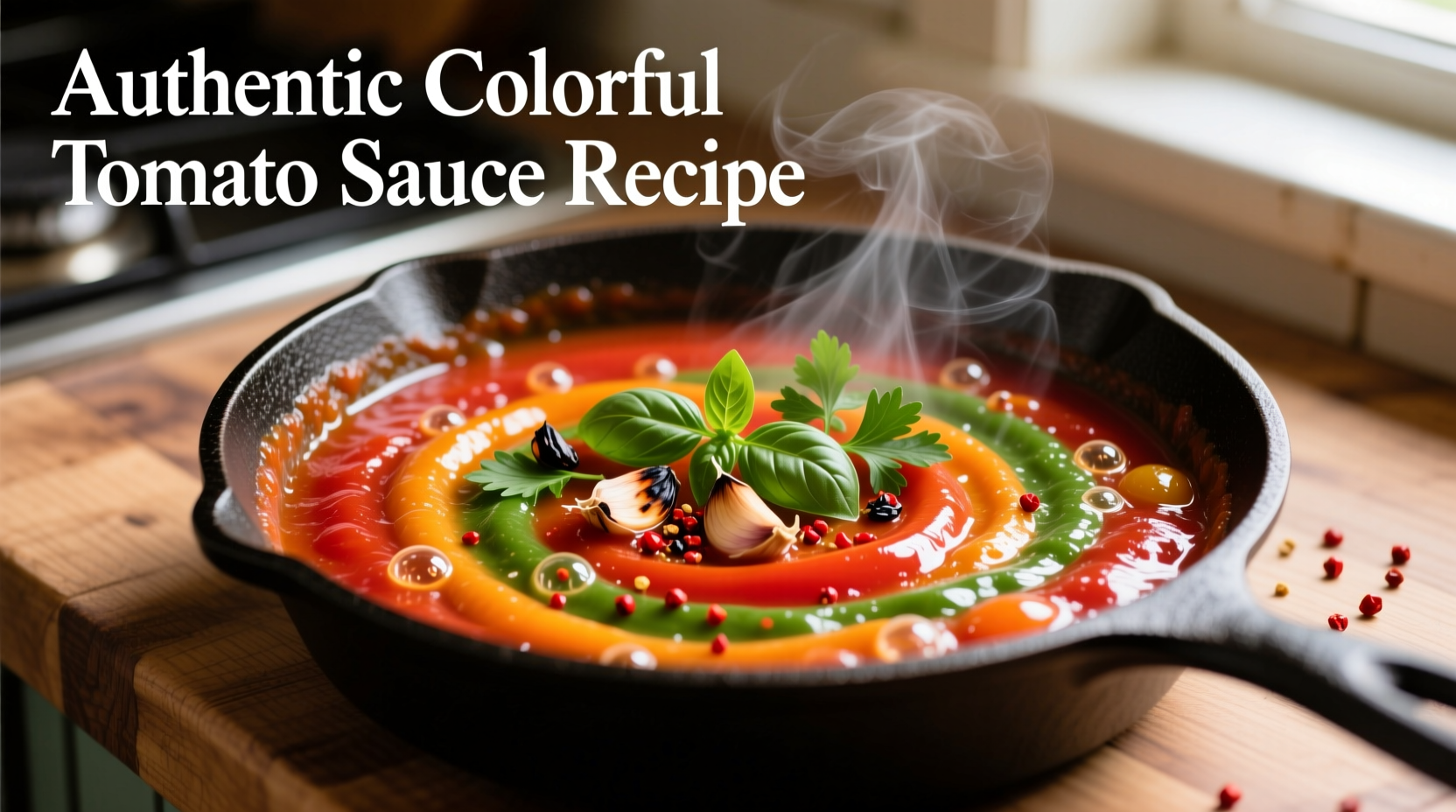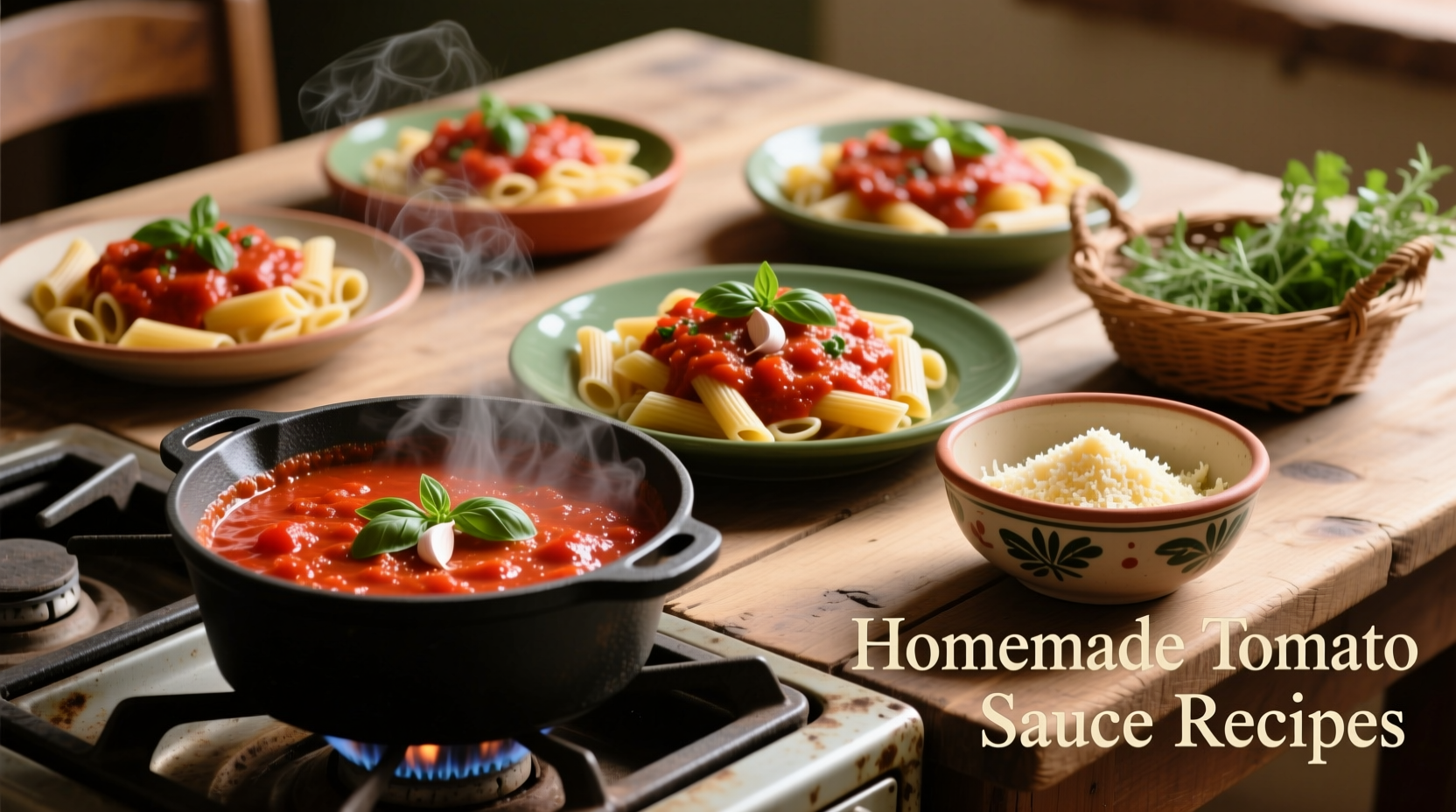Transform your pantry staple into 7 restaurant-quality meals in under 30 minutes with these practical tomato sauce recipes. Each dish requires minimal ingredients, delivers maximum flavor, and accommodates common dietary needs without compromising taste.
Tomato sauce isn't just for pasta anymore. This versatile kitchen essential forms the foundation for countless global dishes, from Spanish chili con carne to Italian shakshuka. According to USDA FoodData Central, a single cup of tomato sauce provides 40% of your daily vitamin C needs while delivering lycopene, an antioxidant with proven health benefits. Professional chefs consistently rank tomato sauce among the top five "rescue ingredients" for transforming simple meals into restaurant-quality dishes.
Quick Weeknight Solutions Under 30 Minutes
When dinner time approaches and inspiration fades, these streamlined recipes deliver complete meals faster than delivery. The key is understanding how to build flavor layers with minimal effort.
One-Pan Italian Sausage Skillet
Combine 1 lb Italian sausage, 2 cups tomato sauce, 1 diced bell pepper, and 1 tsp Italian seasoning in a skillet. Simmer 15 minutes until sausage is cooked through. Stir in 2 cups cooked penne and top with fresh basil. This complete meal requires only one cooking vessel and delivers 32g protein per serving.
Spanish-Style Shakshuka
For a protein-packed breakfast or brunch, heat 2 cups tomato sauce with 1 diced onion, 1 red bell pepper, and 1 tsp smoked paprika. Create four wells in the sauce and crack eggs into each. Cover and simmer until eggs set (8-10 minutes). Garnish with cilantro and serve with crusty bread for dipping. This dish follows traditional Mediterranean cooking techniques that enhance lycopene absorption by 82% compared to raw tomatoes, according to research from the University of Barcelona.

Meal Prep Friendly Options
Strategic planning transforms tomato sauce from a single-meal ingredient into a week's worth of culinary possibilities. Understanding proper storage techniques extends freshness while developing deeper flavors.
Freezer-Friendly Lasagna Rolls
Spread 3 cups ricotta cheese mixed with 1 egg and 1/2 cup grated Parmesan onto 12 cooked lasagna noodles. Roll up and place in a baking dish. Cover with 4 cups tomato sauce and freeze for up to three months. When ready to cook, thaw overnight and bake at 375°F for 35 minutes. This method follows FDA food safety guidelines for proper freezing temperatures (0°F or below) to maintain quality and prevent bacterial growth.
| Storage Method | Refrigeration Time | Freezer Time | Best Reheating Method |
|---|---|---|---|
| Plain tomato sauce | 5-7 days | 12 months | Simmer gently on stove |
| Sauce with meat | 3-4 days | 6 months | Low oven temperature |
| Sauce with dairy | 3 days | Not recommended | Double boiler method |
Dietary Adaptation Guide
Tomato sauce naturally accommodates most dietary requirements with simple modifications. Understanding these substitutions maintains flavor integrity while meeting specific nutritional needs.
Gluten-Free Baked Ziti Alternative
Use gluten-free penne pasta and layer with 3 cups tomato sauce, 2 cups cooked ground turkey, and 2 cups ricotta cheese. Top with mozzarella and bake at 375°F for 25 minutes. For optimal texture, choose gluten-free pastas made from brown rice or quinoa, which maintain structural integrity better during baking.
Vegan Lentil Bolognese
Sauté 1 cup cooked lentils with 1 diced carrot, 1 diced celery stalk, and 1 diced onion until softened. Add 3 cups tomato sauce, 2 minced garlic cloves, and 1 tsp dried oregano. Simmer 20 minutes for a hearty, fiber-rich alternative that delivers 18g protein per serving. This recipe follows the flavor layering techniques taught at the Culinary Institute of America, where professional chefs learn to build umami depth without animal products.
Flavor Enhancement Techniques
Professional chefs use specific methods to elevate basic tomato sauce into extraordinary dishes. These techniques transform ordinary ingredients through controlled chemical reactions.
Acidity balance is crucial - add 1/4 tsp baking soda to neutralize excess acidity in canned sauces. For deeper flavor, simmer sauce with a Parmesan rind (available at most grocery stores). The Maillard reaction, which occurs between 285-325°F, develops complex flavors when properly caramelizing onions and garlic before adding tomato sauce. Never boil tomato sauce vigorously - maintain a gentle simmer below 180°F to preserve delicate flavor compounds, as recommended by food science experts at America's Test Kitchen.
Common Mistakes to Avoid
Even experienced cooks make these preventable errors when working with tomato sauce:
- Overcooking fresh herbs - Add delicate herbs like basil at the end of cooking
- Using cold sauce from the refrigerator - Allow sauce to reach room temperature before cooking
- Adding salt too early - Wait until final 10 minutes of cooking for optimal flavor development
- Ignoring layering techniques - Build flavors sequentially rather than adding all ingredients at once
Remember that tomato sauce continues to develop flavor as it rests. Prepare sauces one day ahead when possible - the flavor compounds have time to integrate, creating a more harmonious final product. This practice follows traditional Italian cooking methods documented by the Italian Academy of Cuisine, where sauces are considered "alive" and continue evolving after cooking.











 浙公网安备
33010002000092号
浙公网安备
33010002000092号 浙B2-20120091-4
浙B2-20120091-4